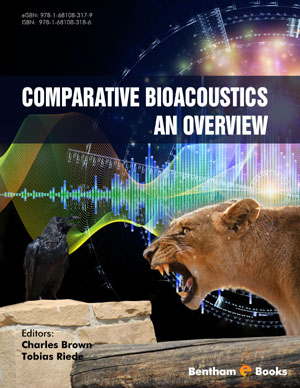Abstract
As an acoustic signal travels from the source to a receiver, it is affected by a variety of physical processes, all dictated by properties of the signal and the environment. The signal energy is weakened by geometric attenuation as well as absorption by the medium. The temporal and spectral properties can be modified by sound absorption, refraction, and interference from multi paths caused by reflections. The path from the source to the receiver may be bent due to refraction. Besides geometrical attenuation, the ground effect and turbulence are the most important mechanisms to influence communication sounds for airborne acoustics and bottom and surface effects for underwater sounds. Refraction becomes very important close to shadow zones. For echolocation signals, geometric attenuation and sound absorption have the largest effects on the signals.
Keywords: Echolocation, Excess attenuation, Ground effect, Refraction, Reverberation, Scattering, Sound absorption, Sound attenuation, Transmission loss, Turbulence.






















